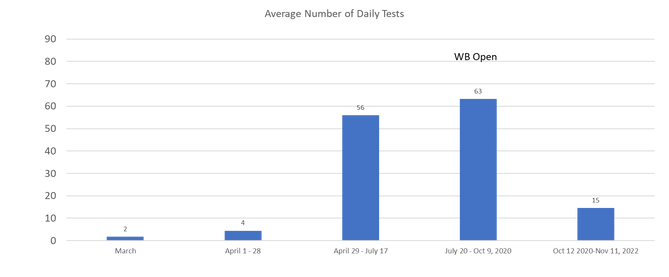FabCon is coming to Atlanta
Join us at FabCon Atlanta from March 16 - 20, 2026, for the ultimate Fabric, Power BI, AI and SQL community-led event. Save $200 with code FABCOMM.
Register now!- Power BI forums
- Get Help with Power BI
- Desktop
- Service
- Report Server
- Power Query
- Mobile Apps
- Developer
- DAX Commands and Tips
- Custom Visuals Development Discussion
- Health and Life Sciences
- Power BI Spanish forums
- Translated Spanish Desktop
- Training and Consulting
- Instructor Led Training
- Dashboard in a Day for Women, by Women
- Galleries
- Data Stories Gallery
- Themes Gallery
- Contests Gallery
- Quick Measures Gallery
- Notebook Gallery
- Translytical Task Flow Gallery
- TMDL Gallery
- R Script Showcase
- Webinars and Video Gallery
- Ideas
- Custom Visuals Ideas (read-only)
- Issues
- Issues
- Events
- Upcoming Events
To celebrate FabCon Vienna, we are offering 50% off select exams. Ends October 3rd. Request your discount now.
- Power BI forums
- Forums
- Get Help with Power BI
- DAX Commands and Tips
- Create a custom static table using DAX
- Subscribe to RSS Feed
- Mark Topic as New
- Mark Topic as Read
- Float this Topic for Current User
- Bookmark
- Subscribe
- Printer Friendly Page
- Mark as New
- Bookmark
- Subscribe
- Mute
- Subscribe to RSS Feed
- Permalink
- Report Inappropriate Content
Create a custom static table using DAX
I am trying to design this chart in powerbi. The x axis contains different time limits.
Currently this is design in excel and the table below is the source of data
| Average Tests | |
| March | 2 |
| April 1 - 28 | 4 |
| April 29 - July 17 | 56 |
| July 20 - Oct 9, 2020 | 63 |
| Oct 12 2020-Nov 11, 2022 | 15 |
This table is created after getting average test from the same column on a different table below
| Date | Number of Tests |
| 03/09/20 | 1 |
| 03/10/20 | 2 |
| 03/11/20 | 1 |
| 03/12/20 | 0 |
Currently powerbi has access to the primary dataset below
Date | Name| Race/Ethnicity | Result
My inital thought was using DAX ROW or DATATABLE to create a Virtual or static table and use the average function to get the numbers. I am stuck!!! I will honestly appreciate any help provided.
Solved! Go to Solution.
- Mark as New
- Bookmark
- Subscribe
- Mute
- Subscribe to RSS Feed
- Permalink
- Report Inappropriate Content
hi @fnyameino
If your categorization is static, the easiest way would be to add a category column in your record table. Then you could pull the category column to your plotting x-axis.
the code to add the column looks like this:
Category =
SWICH(
TRUE(),
"March", TableName[Date]<=DATE(2020,3,31),
"April 1- 28", TableName[Date]<=DATE(2020,4,28),
"April 29- July 17", TableName[Date]<=DATE(2020,7,17),
"July 20- Oct 9 2020", TableName[Date]>=DATE(2020,7,20)&&TableName[Date]<=DATE(2020,10,9),
"Oct 12 2020- Nov 11, 2022", TableName[Date]>=DATE(2020,10,12)&&TableName[Date]<=DATE(2022,11,11)
)
if you have a dynamic grouping, say the way of categorization changes periodically and you find the change in DAX code is an issue, you may import the category table into Power BI and related with the record table.
- Mark as New
- Bookmark
- Subscribe
- Mute
- Subscribe to RSS Feed
- Permalink
- Report Inappropriate Content
hi @fnyameino
If your categorization is static, the easiest way would be to add a category column in your record table. Then you could pull the category column to your plotting x-axis.
the code to add the column looks like this:
Category =
SWICH(
TRUE(),
"March", TableName[Date]<=DATE(2020,3,31),
"April 1- 28", TableName[Date]<=DATE(2020,4,28),
"April 29- July 17", TableName[Date]<=DATE(2020,7,17),
"July 20- Oct 9 2020", TableName[Date]>=DATE(2020,7,20)&&TableName[Date]<=DATE(2020,10,9),
"Oct 12 2020- Nov 11, 2022", TableName[Date]>=DATE(2020,10,12)&&TableName[Date]<=DATE(2022,11,11)
)
if you have a dynamic grouping, say the way of categorization changes periodically and you find the change in DAX code is an issue, you may import the category table into Power BI and related with the record table.
- Mark as New
- Bookmark
- Subscribe
- Mute
- Subscribe to RSS Feed
- Permalink
- Report Inappropriate Content
This worked the magic
Helpful resources
| User | Count |
|---|---|
| 15 | |
| 9 | |
| 8 | |
| 6 | |
| 5 |
| User | Count |
|---|---|
| 29 | |
| 18 | |
| 15 | |
| 7 | |
| 6 |



